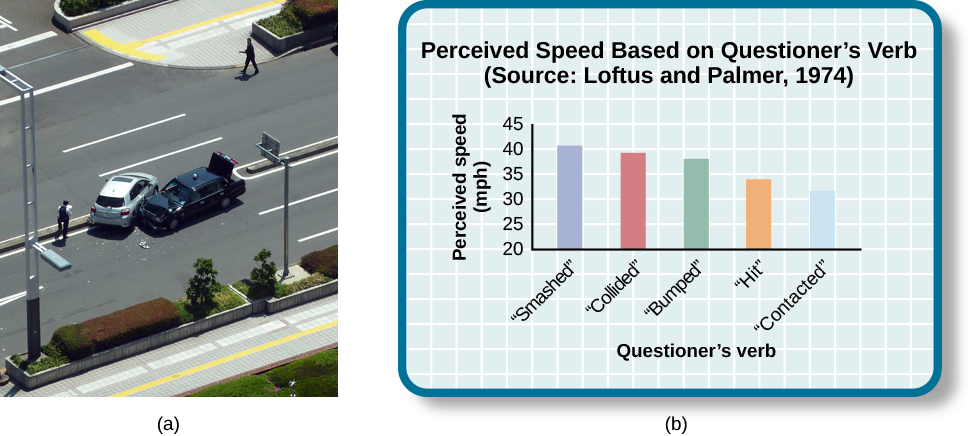| << Chapter < Page | Chapter >> Page > |

Other researchers have described how whole events, not just words, can be falsely recalled, even when they did not happen. The idea that memories of traumatic events could be repressed has been a theme in the field of psychology, beginning with Sigmund Freud, and the controversy surrounding the idea continues today.
Recall of false autobiographical memories is called false memory syndrome . This syndrome has received a lot of publicity, particularly as it relates to memories of events that do not have independent witnesses—often the only witnesses to the abuse are the perpetrator and the victim (e.g., sexual abuse).
On one side of the debate are those who have recovered memories of childhood abuse years after it occurred. These researchers argue that some children’s experiences have been so traumatizing and distressing that they must lock those memories away in order to lead some semblance of a normal life. They believe that repressed memories can be locked away for decades and later recalled intact through hypnosis and guided imagery techniques (Devilly, 2007).
Research suggests that having no memory of childhood sexual abuse is quite common in adults. For instance, one large-scale study conducted by John Briere and Jon Conte (1993) revealed that 59% of 450 men and women who were receiving treatment for sexual abuse that had occurred before age 18 had forgotten their experiences. Ross Cheit (2007) suggested that repressing these memories created psychological distress in adulthood. The Recovered Memory Project was created so that victims of childhood sexual abuse can recall these memories and allow the healing process to begin (Cheit, 2007; Devilly, 2007).
On the other side, Loftus has challenged the idea that individuals can repress memories of traumatic events from childhood, including sexual abuse, and then recover those memories years later through therapeutic techniques such as hypnosis, guided visualization, and age regression.
Loftus is not saying that childhood sexual abuse doesn’t happen, but she does question whether or not those memories are accurate, and she is skeptical of the questioning process used to access these memories, given that even the slightest suggestion from the therapist can lead to misinformation effects. For example, researchers Stephen Ceci and Maggie Brucks (1993, 1995) asked three-year-old children to use an anatomically correct doll to show where their pediatricians had touched them during an exam. Fifty-five percent of the children pointed to the genital/anal area on the dolls, even when they had not received any form of genital exam.
Ever since Loftus published her first studies on the suggestibility of eyewitness testimony in the 1970s, social scientists, police officers, therapists, and legal practitioners have been aware of the flaws in interview practices. Consequently, steps have been taken to decrease suggestibility of witnesses. One way is to modify how witnesses are questioned. When interviewers use neutral and less leading language, children more accurately recall what happened and who was involved (Goodman, 2006; Pipe, 1996; Pipe, Lamb, Orbach,&Esplin, 2004). Another change is in how police lineups are conducted. It’s recommended that a blind photo lineup be used. This way the person administering the lineup doesn’t know which photo belongs to the suspect, minimizing the possibility of giving leading cues. Additionally, judges in some states now inform jurors about the possibility of misidentification. Judges can also suppress eyewitness testimony if they deem it unreliable.

Notification Switch
Would you like to follow the 'Psychology' conversation and receive update notifications?